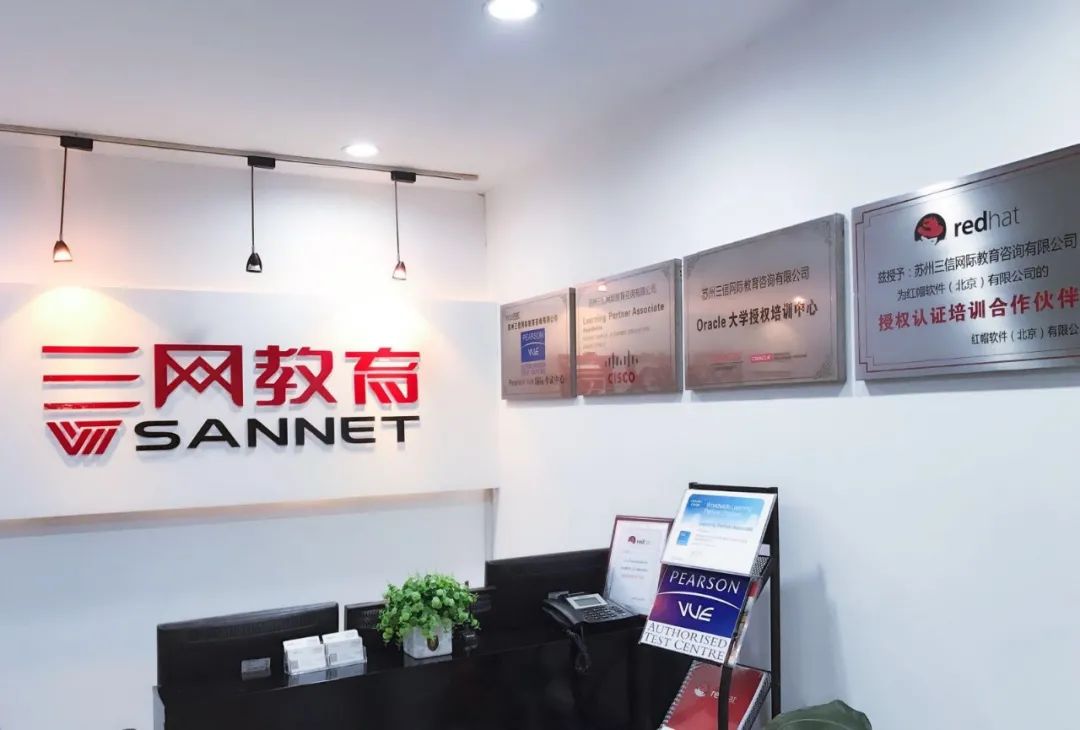

Summary of Common Basic Linux Commands
A
account
In Unix systems, it refers to the combination of a login name, personal directory, password, and shell that allows an individual to connect to the system.
alias
Alias. A mechanism in the shell that allows a string to be replaced by another when executing commands. Typing alias at the prompt will show all currently defined aliases.
ARP
Address Resolution Protocol. This internet protocol is used to dynamically map internet addresses to hardware addresses on a local area network.
ATAPI
AT Attachment Packet Interface. Best known as IDE; it provides additional commands to control CDROM and tape devices. IDE controllers with extended features are often referred to as EIDE (Enhanced IDE).



System Learning Consult Course Advisor
B
batch
Batch processing. A processing mode where work is sent to the processor in sequence, and the processor executes them one by one until the last one is completed, ready to accept another set of processing lists.
boot
Boot. The entire process that occurs when the power switch of the computer is pressed, the machine starts to check the status of the interface devices, and loads the operating system into memory.
bootdisk
A boot disk. A bootable floppy disk that contains the necessary program code to load the operating system from the hard disk (sometimes from itself).
BSD
Berkeley Software Distribution. A Unix branch developed by the Information Sciences Department at the University of California, Berkeley.
buffer
A buffer is a small area of fixed capacity in memory where content can load area mode files, system partition tables, and executing processes, etc. The coherence of all buffers is maintained by buffer memory.
buffer cache
Buffer access. This is a crucial part of the operating system kernel, responsible for keeping all buffers up to date, and can reduce memory space when necessary by clearing unnecessary buffers.
C
CHAP
Challenge-Handshake Authentication Protocol: A communication protocol used by ISPs to authenticate their clients. Unlike PAP, it will re-verify after a fixed time period after the initial determination.#Network Engineer Club
client
A client is a program or computer that can temporarily connect to another program or computer to send commands or request information. It is part of the server/client system component.
client/server system
A system architecture or communication protocol composed of a server and one or more clients.
compilation
The process of converting source code written in a human-readable programming language (like C) into a machine-readable binary file.
completion
Automatic completion. As long as there are compatible objects in the system, the shell will automatically expand an incomplete substring into an existing filename, username, or other capabilities.
compression
Compression. A method of reducing the size of files or the number of characters during the transmission process over a communication connection. Compression programs typically include compress, zip, gzip, and bzip2.
console
The console, which is commonly referred to as a terminal. They are the machines that users operate connected to a large central computer. For PCs, the actual terminal refers to the keyboard and screen.
cookies
Temporary files written to the local hard disk by a remote web server. They allow the server to recognize user preferences when they reconnect to the website.
D
DHCP
Dynamic Host Configuration Protocol. A communication protocol designed for local network machines that can dynamically obtain IP addresses from a DHCP server.
DMA
Direct Memory Access. A technology used in PC architecture that allows interface devices to access or read/write data from main memory without going through the CPU.
DNS
Domain Name System. A mechanism responsible for assigning names/addresses. It can map machine names to IP addresses. DNS also allows reverse lookup, meaning you can find out the machine name from an IP address.
DPMS
Display Power Management System. A protocol used by all currently produced monitors to manage their power to extend their lifespan.
E
editor
An editor generally refers to a program used to edit text files (i.e., a text editor). The most well-known GNU/Linux editors are Emacs and VIM.
Email. A method for people within the same network to send electronic information to each other. Like regular mail, email requires the recipient and sender addresses for proper delivery.
environment variables
Environment variables. Can be viewed directly through the shell.
ext2
Short for “Extended 2 filesystem”. It is the original file system of GNU/Linux and has characteristics of any Unix file system: supports special files (character devices, symbolic links…), file permissions, and ownership, etc.
ext3, ext4
Similar to the introduction of ext2 above, it is the file system under Linux. Currently, most Linux systems default to mount ext4, refer to the history of the Linux file system EXT4: https://ywnz.com/linuxxw/2146.html.
F
FAT
File Allocation Table. A file system used in DOS and Windows operating systems.
FDDI
Fiber Distributed Digital Interface. A high-speed network physical layer used for fiber optic communication.
FIFO
First In, First Out. A data structure or hardware buffer where items are removed based on the order they were added. A pipeline is the most common example of the FIFO concept in practice.
Filesystem
A planning method to ensure that files are stored consistently on actual media (hard disks, disks).
firewall
A machine or dedicated device responsible for connecting to external networks in a local area network topology; it also has multiple tasks such as filtering or controlling activities on certain communication ports and determining which specific interfaces can be accessed.
framebuffer
A technique that maps the RAM on the display card to the machine’s memory address space. It allows applications to access the RAM on the display card without directly communicating with it.
FTP
File Transfer Protocol. A standard internet communication protocol used for transferring files between machines.
G
gateway
A network device used to connect two IP network segments.
GIF
Graphics Interchange Format. A widely used image file format for the web, GIF image data can be compressed or stored as an animation.
GNU
Short for “GNU’s Not Unix”. The GNU project was initiated by Richard Stallman in the early 1980s, aiming to develop a free operating system (“free” means “freedom” not free of charge).
GPL
General Public License. Its philosophy is very different from all commercial software licenses: there are no restrictions on copying, modifying, or redistributing the software itself. You can obtain the source code; the only restriction is that when you distribute it to others, they will also benefit from the same rights.
GUI
Graphical User Interface. A computer operating interface composed of menus, buttons, icons, etc., that make up the window appearance.
H
host
A term used to refer to a computer. Generally, this term is used for computers connected to a network.
HTTP
HyperText Transfer Protocol. This communication protocol allows you to connect to colorful websites and retrieve HTML files or documents. The HTTPS deployed by Cloud Network Niu Station is an encrypted transmission protocol.
HTML
HyperText Markup Language. This language can be used to write web page files.
I
inode
An entry point used to point to file content in Unix-like file systems. Each inode can be uniquely identified in this way and contains relevant information about the file it points to, such as access time, type, file size, etc.
Internet
The internet. This is a vast network connecting many computers around the world.
IP address
An address representation used to identify a computer on the internet, consisting of four sets of numbers, such as 192.168.0.1. There are two types of addresses: static or dynamic. Static IP addresses do not change; dynamic IP addresses mean the IP address changes each time you reconnect to the network.
IP masquerading
A method of hiding a computer’s real IP address when using a firewall to prevent it from being seen by the outside world. Traditionally, any external network connection coming through the firewall obtains the firewall’s IP address.
IRC
Internet Relay Chat. A standard used for real-time chatting on the internet. It allows the creation of a channel for private secret conversations and file transfers.
ISA
Industry Standard Architecture. An early bus specification for personal computers, which is being gradually replaced by PCI buses.
ISDN
Integrated Services Digital Network. A set of communication standards that allow the transmission of voice, digital network services, and video over a single cable or fiber optic line.#Network Engineer Club
ISO
International Standards Organization.
ISP
Internet Service Provider. A company that provides internet access to its customers, regardless of whether the medium is through telephone or dedicated lines.
K
kernel
The core. This is the key to the operating system. The kernel is responsible for resource allocation and distinguishing between the processes of different users. It handles all actions that allow programs to communicate directly with computer hardware, including managing buffer access, etc.
L
LAN
Local Area Network. Generally refers to a network system formed when machines are connected by the same physical cable.
LDP
Linux Documentation Project. A non-profit organization that maintains GNU/Linux documentation. Its most famous achievements are various HOWTO documents; in addition, it also maintains FAQs and even some books.
loopback
A virtual network interface that connects a machine to itself, allowing executing programs to not consider that both network entities are actually on the same machine.
M
manual page
A reference manual. A small file that contains command definitions and usage that can be consulted with the man command.
MBR
Master Boot Record. The name used for the first sector of a bootable hard disk. The MBR contains execution code used to load the operating system into memory or boot loaders (such as LILO), as well as the partition table of that hard disk.
MIME
Multipurpose Internet Mail Extensions. A string that describes the content of a file in the form of type/subtype in an email.
MPEG
Moving Pictures Experts Group. An ISO committee that establishes audio and video compression standards; MPEG is also the name of their algorithm.
N
NCP
NetWare Core Protocol. A communication protocol defined by Novell for accessing file and print services of the Novell NetWare system.
newsgroups
News groups. Specific discussion areas or news areas that can be accessed by news or USENET client programs for reading or writing information on a specific topic.
NFS
Network File System. A network file system that provides file sharing over a network.
NIC
Network Interface Controller. An adapter installed in a computer that provides connection to network entities, such as Ethernet cards.
NIS
Network Information Service. The purpose of NIS is to share common information across NIS domains, which cover an entire local area network, part of a local area network, or several local area networks. It can output password databases, service databases, and group information, etc.
P
PAP
Password Authentication Protocol. A protocol used by many ISPs to authenticate clients, in which the client sends a set of unencoded ID and password to the server.
patch
A patch. Contains a list of revisions to be released in the source code, aimed at adding new features, modifying bugs, or correcting according to certain actual needs.
path
Specifies the location of a file or directory in the file system. In GNU/Linux, there are two different types of paths: relative paths refer to the location of files or directories relative to the current directory; absolute paths refer to the location of files or directories relative to the root directory.
PAP
Password Authentication Protocol. A protocol used by many ISPs to authenticate clients, in which the client sends a set of unencoded ID and password to the server.
PCI
Peripheral Components Interconnect. A bus specification established by Intel, which has become the bus standard in PC architecture. It is the successor to ISA and provides many services: device, configuration information, IRQ sharing, bus control, and many more functions.
PCMCIA
Personal Computer Memory Card International Association, commonly referred to as “PC Card”, is a standard for portable computer external interfaces, such as modems, hard disks, storage cards, Ethernet cards, etc.
pipe
A special type of Unix file. One program writes data into a pipe, while another program reads data from the pipe until it ends. The pipeline uses FIFO (First In, First Out), so data is read by another program until the sequence ends.
pixmap
Short for “pixel map”. A type of bitmapped image.
PNG
Portable Network Graphics. This file format is primarily for web use; it is designed to be patent-free to replace the patented GIF and has some additional features.
PNP
Plug’N’Play. First used for ISA devices to add configuration information, now more widely used for all devices to echo configuration parameters. As we know, all PCI devices are plug and play.
POP
Post Office Protocol. This common communication protocol is used to download emails from ISPs.
PPP
Point to Point Protocol. A communication protocol for transmitting data over serial signal lines. It is commonly used to transmit IP packets over the internet and can also be used with other communication protocols, such as Novell’s IPX protocol.
preprocessors
Preprocessors. Indicate the compiler to replace specific data or code snippets in the source code, such as C’s preprocessors #include, #define, etc.
process
A process. In an operating system, a process is generated alongside the execution of a program.
prompt
Prompt symbol. In the shell, it is the string in front of the cursor where character commands are entered after.
Protocol
A communication protocol refers to the way different machines communicate over a network, whether by software or hardware, defining the format of data transmission. There are many well-known communication protocols, such as HTTP, FTP, TCP, UDP, etc.
proxy
A proxy server. A machine located between a network and the internet, primarily tasked with accelerating many widely used communication protocols (such as HTTP, FTP). It contains a preconfigured quick access that can reduce the cost of repeated data requests.
Q
quota
A quota limit is a method of restricting users’ use of disk space. On some file systems, administrators can impose different size limits on each user’s directory.#Network Engineer Club
R
RAID
Redundant Array of Independent Disks. A project that began in the Berkeley University Computer Science Department, aimed at distributing stored data across different disks in the same array.
RAM
Random Access Memory. Refers to the main memory of a computer, where “Random” also means any part of the memory can be accessed directly.
read-only mode
Read-only mode. Indicates that files cannot be written to, only read, and cannot be modified or deleted.
read-write mode
Read-write mode. Indicates that files can be written to. They can be read or modified, and if permissions allow, deleted.#Network Engineer Club
root
Root is the superuser on any Unix/Linux system. Root is responsible for managing and maintaining the entire Unix/Linux system.
RFC
Request For Comments. An official Internet standard document issued by the IETF (Internet Engineering Task Force). They describe all protocols that are used or required. If you want to know how a particular communication protocol works, you can find the corresponding RFC document to read.
RPM
Redhat Package Manager. A software package format developed by Red Hat for producing software packages. It is used in many GNU/Linux distributions, including the Red Flag Linux operating system.
run level
A run level is a system setting that allows only certain selected processes to exist. Each run level is clearly defined in the /etc/inittab file, specifying which processes are allowed.
S
SCSI
Small Computers System Interface. A bus specification that is efficient and allows multiple different peripherals to be used. Unlike IDE, SCSI bus performance is not limited by the speed at which peripherals can accept commands. Only high-end machines will have SCSI buses built into the motherboard; ordinary PCs use an additional card.
server
A server. Provides functions or services to allow programs or computers to connect to execute commands or obtain information they need.
shadow passwords
Shadow passwords. A password management method in Unix, where encrypted passwords are stored in a file that not everyone can read, a commonly used password system today. It also provides password time limit functionality.
shell
The shell is the basic interface of the operating system core, providing a command line for users to enter commands to execute programs or system commands. All shells provide command line functionality to automate tasks or commonly used but complex tasks. These shell commands are similar to batch files in DOS, but more powerful. Common shells include Bash, sh, tcsh, etc.#Network Engineer Club
SMB
Server Message Block is a communication protocol used by Windows (9x/2000 or NT) for sharing files or printers over a network.
SMTP
Simple Mail Transfer Protocol. A protocol used to send emails. Mail transfer agents like sendmail or postfix use SMTP and are sometimes referred to as SMTP servers.
socket
A file type that conforms to any network connection.
T
TCP
Transmission Control Protocol. This is the most reliable communication protocol used to transmit network packets using IP. TCP includes necessary checks to ensure packets are delivered. Unlike UDP, TCP operates in connection mode, meaning that before exchanging information, the two machines must first establish a connection.
telnet
Establish a connection to a remote host. Telnet is the most commonly used method for remote login, although there are better and more secure methods, such as SSH.
U
URL
Uniform Resource Locator. A unified and specific format string used to identify resources on the network. This resource may be a file, server, or other.
V
virtual desktops
Virtual desktops. In the X window system, multiple desktops can be provided. This feature allows you to flexibly arrange work windows, preventing many programs from crowding onto the same desktop.
W
WAN
Wide Area Network.
window manager
A program responsible for the “look and feel” of the graphical environment. Mainly responsible for handling window title bars, frames, buttons, main menus, and some shortcut methods.



System Learning Consult Course Advisor
Why Choose San Network Education
01
Deep Training Background
San Network Education was established in 2006, after 16 years of hard work, it has trained over 10,000 high-end IT talents in Suzhou and surrounding cities, with students spread across various domestic and foreign enterprises in Suzhou, as well as in the United States, Canada, Japan, New Zealand, South Korea, Singapore, and regions such as Hong Kong and Macau. San Network’s client base covers industries such as government, finance and securities, foreign enterprises, large state-owned enterprises, and universities.
02
Professional IT Certification Training Exam Center
San Network Education is a training center authorized by multiple original manufacturers. Currently, the training services we provide involve Huawei, Cisco, Red Hat, Oracle, Microsoft, VMware, IT project management, cloud computing, and other technical fields. We are also a PROMETRIC authorized exam center and an ATAC authorized exam center.
03
Strong Teacher Resources
San Network collaborates with top technical manufacturers in the industry, signing many senior technical experts to provide professional IT certification courses. We have HCIE/CCIE/RHCA/OCM instructors with rich project experience and teaching experience, dedicated to helping students and enterprises effectively enhance their competitiveness.
04
Common Choice of Many Valuable Clients
China Post, China Telecom, China Mobile Suzhou R&D Center, Huayan Water Affairs, Bosch Automotive, Yihua Transportation, Suzhou Earthquake Survey Research Institute, Shanshi Network Technology, Fujitsu, Jiangsu Tianchuang, Inner Mongolia Shenhua Group, etc.




– END –

///
Professional • Strength • Integrity • Value

WeChat ID:hcie1024
Official Website:www.sannet.net
Consultation Hotline:17365375526
Consultation Phone:0512-82289966
Address: Room 433, Heji Plaza, 666 Ganjiang East Road, Suzhou
